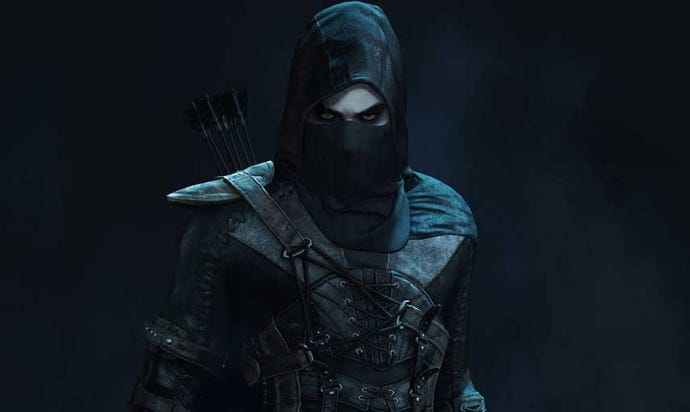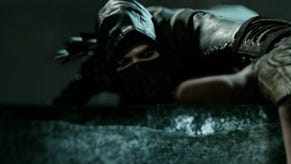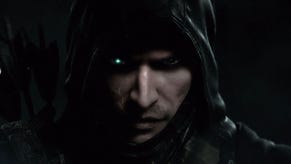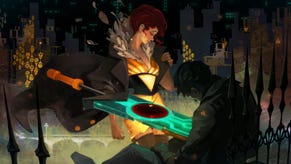Thief: emphasising credibility, downplaying accessibility
Thief has to be more playable than its precursors - but without sacrificing the unforgiving stealth simulation that is the franchise's core. The result is unforgiving and challenging, but doesn't require octopus-level dexterity.
Prior to this year's reboot, my only experiences with Thief were mostly negative. It's one of those franchises I came late to, picking it up in a bargain bin collection of re-releases when I first acquired a decent gaming PC. All my friends raved about how good it was, but I'd never played anything like it - I think it might have been one of the first first-person game I'd ever played.
Objectively, watching somebody else play, I can see the brilliance, but there's just something about having to remember a dozen different buttons for peek that puts me off.
"Technology has advanced. I played through the previous games not too long ago actually," director Nicolas Cantin told us in a recent interview. "You see a lot of things that are not acceptable today, to gamers.
"Thief was really our main reference. We wanted to keep the main pillar. But we wanted to deliver a new experience, something for the modern public, but that also that would please the fans. This was a good challenge we had."
I can't speak for those hardcore fans, although I do wonder whether they can learn to be proud of their skill at the game even as we regular joes turn the difficulty down and experience the story and Thief fantasy.
"The experience was more dry," Cantin said of the original Thief games' bristling control schemes, now rendered simple by the arrival of ubiquitous analog controls. "The technology now gives us all these utilities. We want you to become the character. You become Garrett. We put a lot of personality in his hands, the way he's moving. So it's not only, poof!" - he gestured flatly - "Generic movement. It's how we define the character. We don't want you to play Garrett. We want you to be Garrett.
"We put a lot of effort into those details because this is also one of the big differences between the game of today and the game of the past."
Whenever a developer or publisher mentions "accessibility", it raises hackles. But while I'm no advocate for dumbing down games and lowering difficulty, there's something be said for replacing a dozen different buttons for peek with an analog stick capable of producing even more subtle motions.
Eidos Montreal's flexibility and willingness to cut certain features demonstrates that it isn't willing to sacrifice the franchise's unique flavour in favour of something with universal appeal. Another apt demonstration of this is the fact that guards, once alerted, never return to an entirely passive patrol state - something those of us raised on Metal Gear and its ilk will find unforgiving.
"If something happens, they change their reactions and they will behave differently. Even though they go back to their 'normal state', shall we say, they'll be affected by what happened before," Cantin confirmed.
"So it's not about 'going back' and redoing the loop and things, it's really about being more organic and making sure that's it not always the same thing."
Additionally, there aren't any simple, hard and fast rules for the player to learn by rote; how alerted characters behave depends on who you alert, and when, and how. At one stage, Eidos Montreal went for a hyper-realistic approach, where guards never gave up looking for the player after an alert - but it wasn't much fun.
So guards won't come drag you out of a cupboard, unless they know you've run into a locked room, but they won't ever forget you were there - players will have to take opportunity of small chances to escape detection, which is where Eidos Montreal hopes the fun is.
"Credibility was really important, to make sure that it was not feeling too much like if you're in the shadow, it will protect you if you stay there all the time."
Speaking of hiding from guards: one last topic I felt I had to raise with Cantin was Garrett's outfit. A master thief ought to blend with the shadows, but you know what really stands out in shadows? Solid blacks. That's why so few camouflage prints utilise it. No serious stealth master would wear solid black. This is a real, true thing, and if Cantin - director and art director on the most pure stealth game in years - did not know it, I was ready to flip a table.
"Black is not the most stealthy colour, is it," I asked.
"Black is n- what is more stealthy than black!" Square Enix PR manager Adam Phillips exclaimed.
"Um, grey? Dark blue? Purple? Green? Pretty much everything," I said. I was showing off.
"Garrett's not wearing black," Cantin said. "He's grey and - like you see all the lighting presently, it's blue. Garrett's not going to have that reflect on him, he fits into the environment.
"It was an interesting thing, the hood and costume. In the beginning it was all in fabric, and when we did a costume [for a live action promo] the girls in New York who were working with us, they did it in full leather. And it looked really much better," Cantin added. "So we were like, 'Oh! Let's do that also in the game.'"
Unfortunately, polished leather shines. "We kind of reduced the specular of the leather, and we had to make sure it was looking good but it was also stealthy.
"But if you look here," - Cantin directed us to a large poster of Garrett - "It's all blue, but the mesh is more like grey, brown, with a lot of variation for the fabrics.
"If you look at the shoes, they won't make much sound. He's meant to be silent and invisible in this world. With the mask, when he's doing stealth action, so his face isn't shining like," Cantin made an expressive sound of garrett's pasty features lighting up the night.
Credibility confirmed.
Thief arrives on PC, PlayStation 3, PS4, Xbox 360, Xbox One at the end of February.










